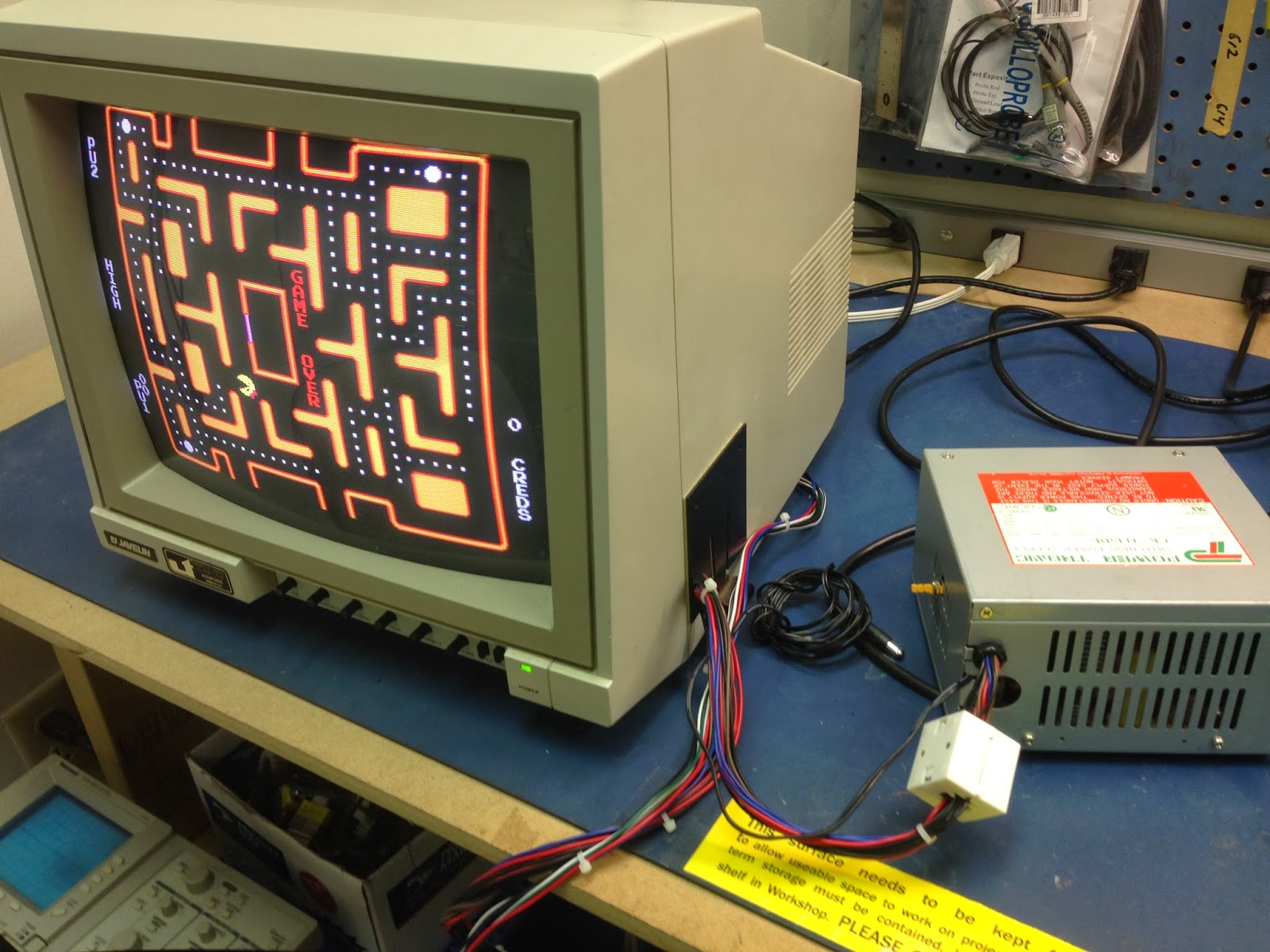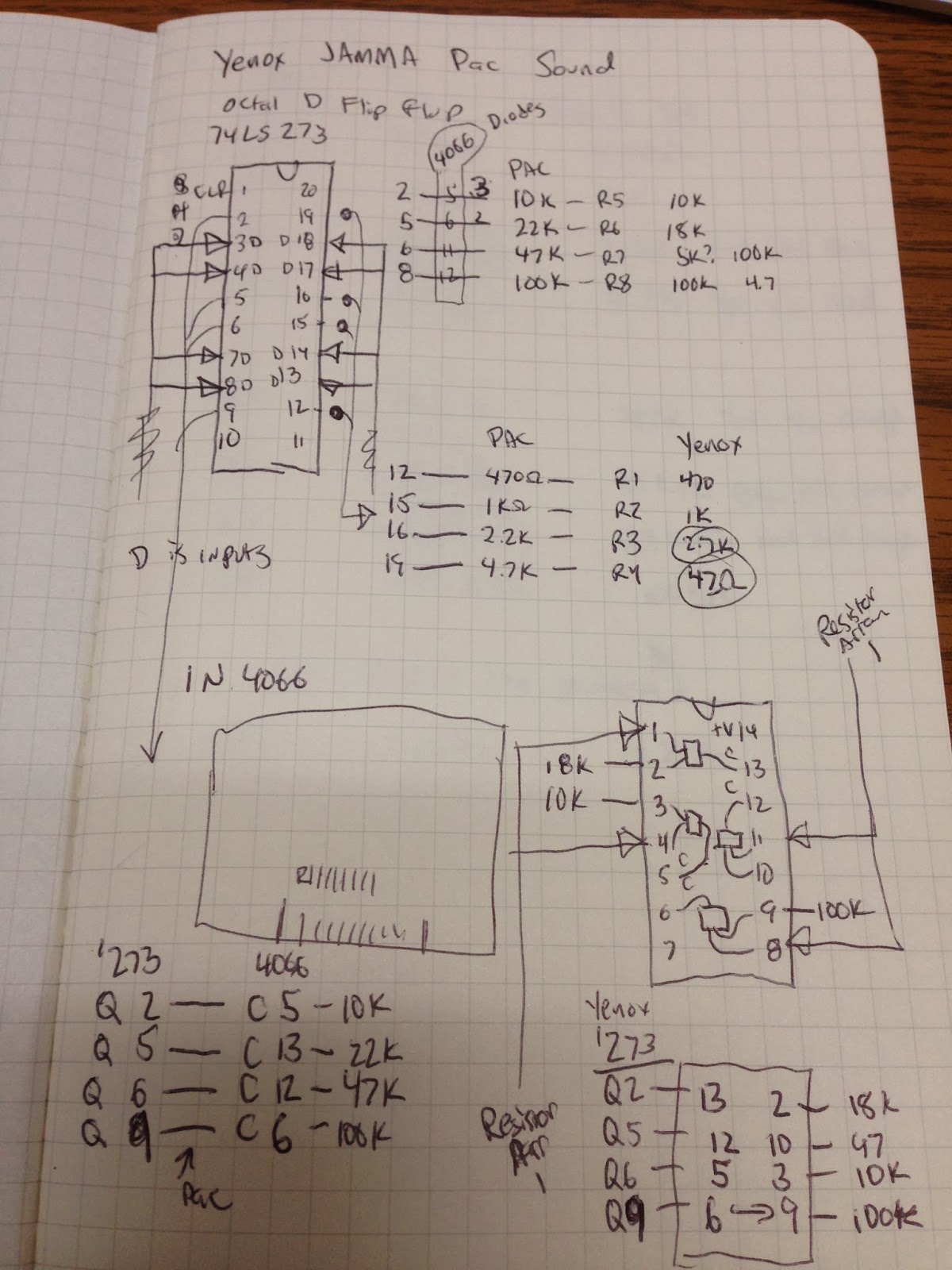The harness/rig I have was always kind of a hack. The video and audio wires terminated in a small box with some knobs which were meant to attenuate the signal but never really worked right. The power switch was on this cord that came out and was weirdly fastened to the side of the power supply. I decided to clean this up while at Interlock for open night.
It turns out that I happened to have the right 6 pin DIN connector for this old RGB monitor (basically a Commodore Amiga 1084 clone). So I wired up Red, Green, Blue, and Ground directly to the correct pins on it. JAMMA spits out composite video, but this monitor takes in Horizontal and Vertical sync. I knew that some monitors would take in composite sync on their Vertical Sync line, so I tried that... and it worked! Huzzah.
The only video issue now is that the game boards put out video that's slightly too hot/too high a voltage, so I should put attenuation resistors inside the din connector or something...
Even though the JAMMA interface spits out amplified audio, I decided to hook up an RCA plug on the audio lines anyway, to plug it into the line-level in on the monitor. As long as I'm careful it will be fine.
And here it is being driven by my Yenox Ms Pac-Man board with the "Horizontal Ms Pac" rom hack.You can see the power switch sticking out of the side of the power supply there. It's not the most optimal thing ever, but it's substantially cleaner than before. Perhaps I'll replace that switch with a nice carling switch in the future. I'll need this test rig for the next task, which is fixing the audio on this board. It sounds horrid...
This was originally posted on the Interlock blog on January 30th, 2014.









